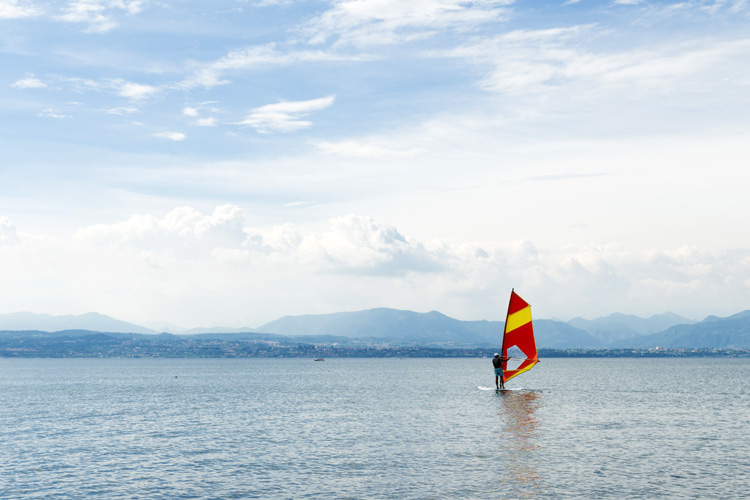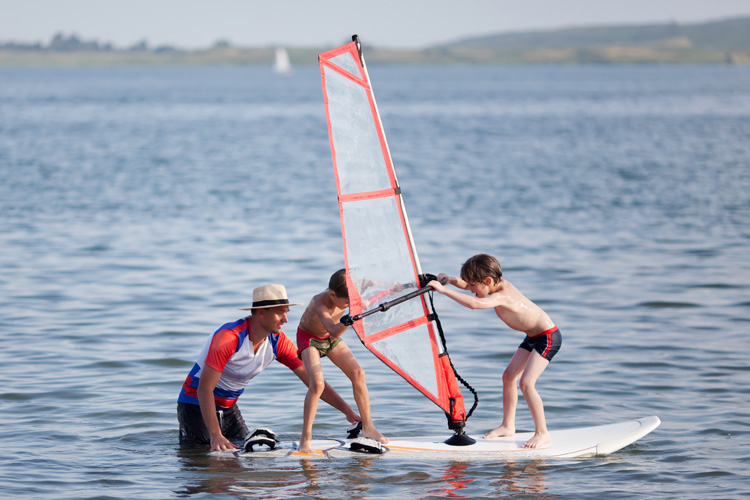Learning to windsurf is easy, and if you choose the right place to start sailing, you'll be up and riding in no time. So, where should you start windsurfing?
Learning to windsurf can be exciting, and if you start in a proper sailing site, you'll have a good first day and will probably be hooked for life.
It is quite frustrating to get the first windsurfing lessons in bumpy and choppy waters so, in many cases, the open ocean is the worst enemy of a beginner windsurfer.
In the first couple of hours, you'll learn to find your balance on a windsurf board while getting the sail out of the water.
So, if you and the equipment are constantly "hit" by small waves and whitewater rollers, you'll struggle to uphaul and get moving.
Basic windsurfing techniques require patience and perseverance, but so do flat waters and steady light winds.
You should be ready to focus your energy on getting ready to sheet in and sail away in a comfortable and safe environment.
Picking a place to start windsurfing can be tricky, and you don't necessarily need to kick off in the ocean at all.
And rocky shores, busy ports, and offshore open waters are not a good idea either.
Ideally, you'll need a spot with four to eight knots onshore/cross-shore wind to accelerate the windsurf learning process.
Offshore winds can be dangerous because they will blow you away from the beach.

But if you think you have found a safe ocean bay, keep in mind that currents and tides will influence your first upwind and downwind adventures. Be careful.
Whenever possible, book a couple of windsurfing lessons. Professional instructors will save you time, and you'll learn to sail faster.
Lakes
Learning to windsurf surrounded by land and windbreakers is safe and always comfortable.
Lagoons
These shallow bodies of water get enough wind from external areas and can be secure at the same time.
Estuaries
These relatively protected bodies of water can often feature regions with light currents and calm waters.
Bays
They provide protection from powerful swells and winds and, in some cases, are perfect for first-timers in windsurfing.
Gulfs
These large bays can sustain the power of Nature and deliver flat waters and steady, gentle winds.
Harbors
These sheltered, natural, or man-made bodies of water are home to many windsurfing schools.
River Docks
They usually mean a safe area for canoeing, kayaking, and small sailing crafts.
Breakwaters and Jetties
They provide protection from high winds and swells in coastal regions.
Flat Seas
Sandy beaches with Mediterranean-esque waters are perfect for novice windsurfers.
Pools
Large pools provide a controlled environment for those willing to train balance, stance, and uphauling.
